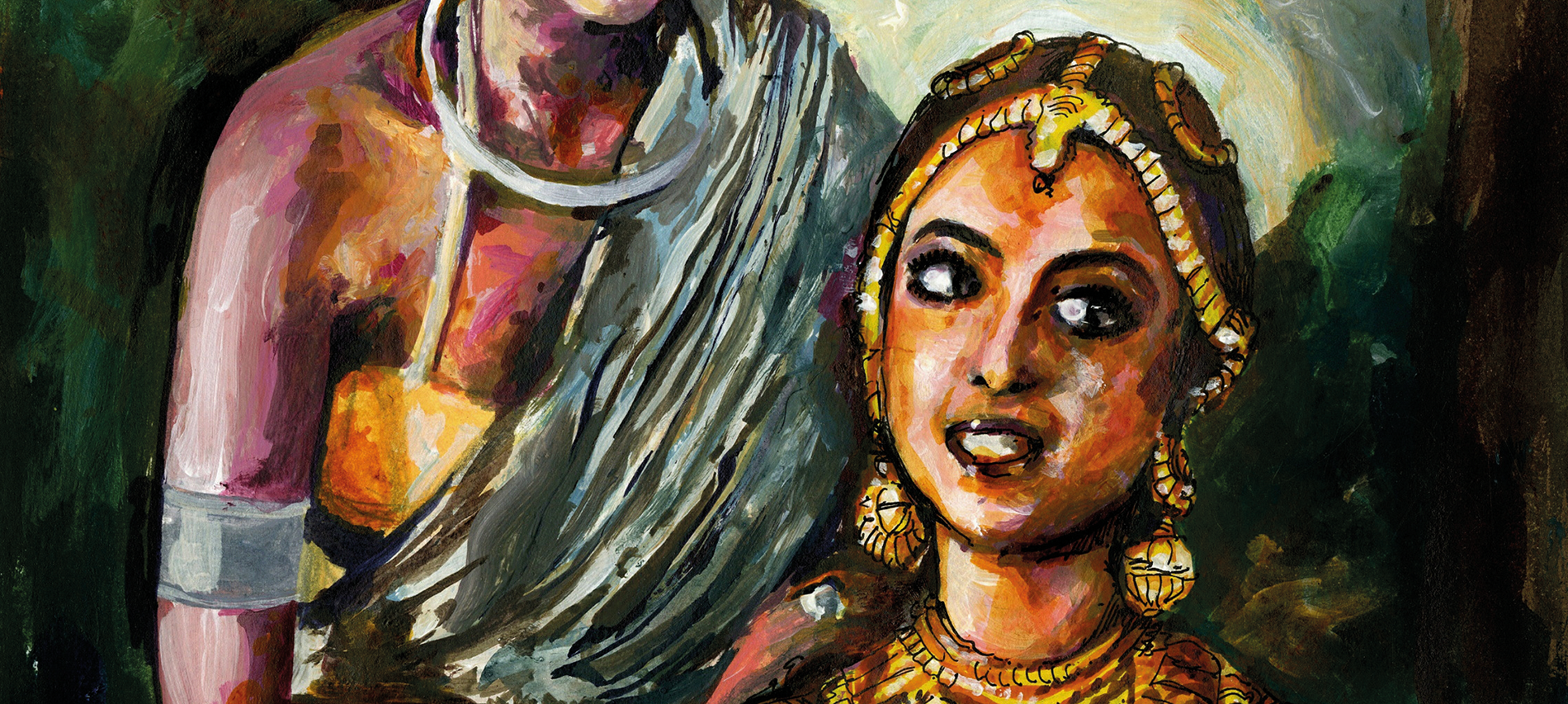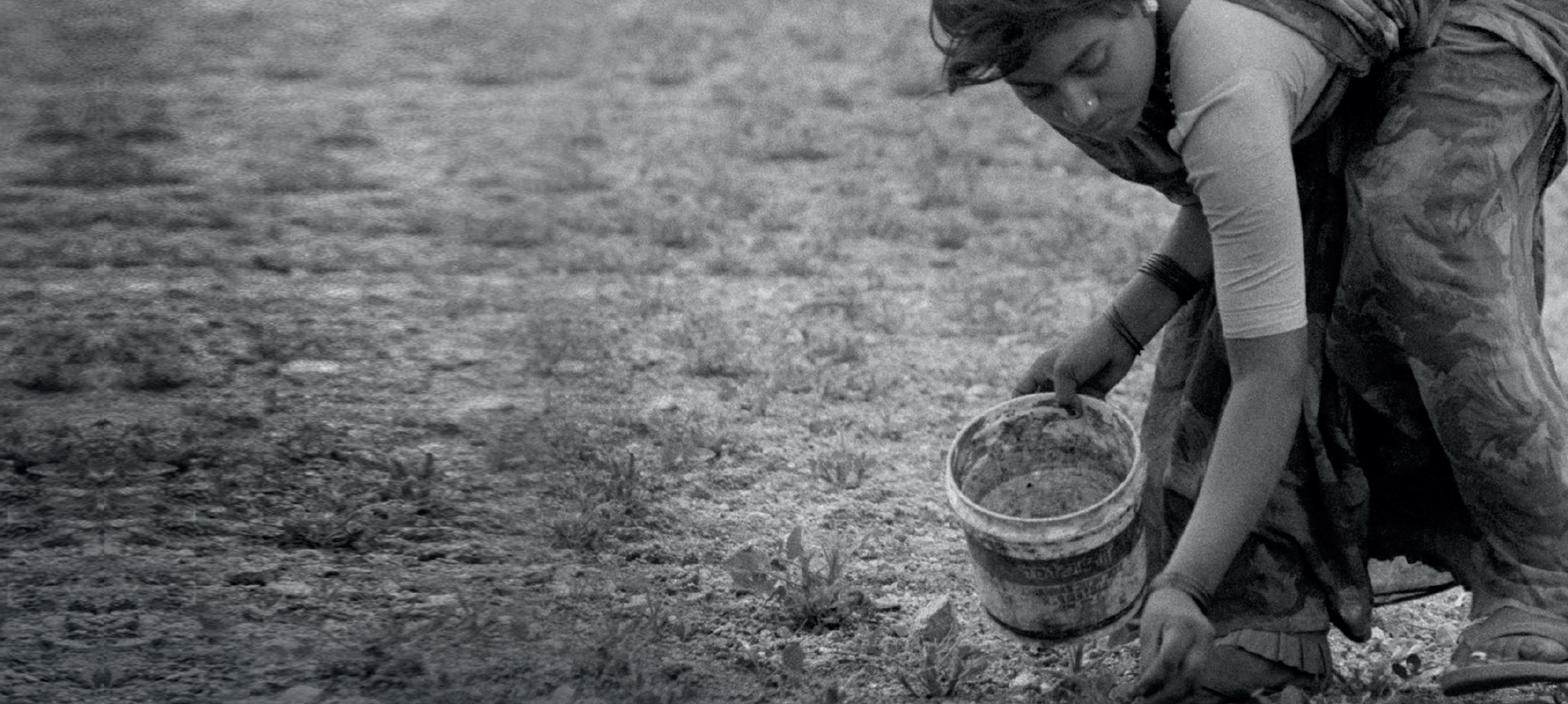In 1963, a human skull was discovered in a pub in Kent in south-east England. The skull is a troublesome relic of both anti-colonial violence and the brutality and spectacle of British retribution.The Skull of Alum Bheg: The Life and Death of a Rebel of 1857 offers a critical assessment of British imperialism that speaks to contemporary debates about the legacies of Empire and the myth of the ‘Mutiny’.
Here’s an excerpt.
——————
As a havildar, Alum Bheg received a pay of 14 rupees per month, double that of ordinary sepoys, and this had been the rate for more than half a century, even as the prices of commodities increased over time.After 16 and 20 years’ service, sepoys would receive an extra bonus of one or two rupees per month, which according to one Indian officer, made a big difference: ‘A prudent sepoy lives upon two, or at utmost three rupees a month in seasons of moderate plenty; and sends all the rest to his family. A great number of the sipahees of our regiment live upon the increase of two rupees, and send all their former seven to their families.’ A substantial part of their salaries were indeed sent back to the sepoys’ villages, as Sleeman explained: ‘They never take their wives or children with them to their regiments, or to the places where their regiments are stationed. They leave them with their fathers or elder brothers, and enjoy their society only when they return on furlough. Three-fourths of their incomes are sent home to provide for their comfort and subsistence, and to embellish that home in which they hope to spend the winter of their days.’
The close link to a particular region and the ties between the sepoys and the villages, was an outcome of the unique recruitment practices of the Bengal Army as they had developed over the past century. As the East India Company became increasingly involved in politics during the second half of the eighteenth century, the nature of British rule in India gradually assumed all the trappings of a sovereign power. The Company was thus transformed from primarily a trading venture to a colonial state in its own right, which by 1818 derived most of its income from land revenue rather than trade. In order to maintain and expand its territorial possessions, the Company depended on local Indian soldiers led and trained by British officers along European military principles. At the time, however, the British were still an emerging power and had to compete with both Indian and European rivals, who were also offering similar service to local soldiers. Before the advent of the ‘civilising’ impulse, much of the Company’s legitimacy as a state power was, in fact, derived through the continuation of pre-colonial practices, which included the establishment of an army of high-caste Hindu sepoys. Out of sheer necessity, the Company in Bengal thus tapped into the military labour market of northern India and relied on existing networks of patronage and caste-ties to recruit peasant regiments directly from the zamindars or landholders of Awadh and Bihar. Accommodating high-caste usages and practices within its regiments was an effective means by which the East India Company could become an attractive and legitimate military employer in India during this period. The Company thus managed to establish a loyal base of recruitment by employing the rhetoric of high-caste status as well as the promise of regular pay and pension. The British recruited directly from the villages of Awadh and Bihar, and when sepoys returned from furlough, they would bring younger family members back to their regiment as prospective recruits. This dynamic reinforced the links between the regiment and the village and meant that parts of the Bengal Army functioned as a sort of extended kinship network. The end-result was a uniquely homogeneous body of sepoys in the Bengal Army, composed mainly of high-caste Brahmins, Bhumihars, and Rajputs.
The religious identity and social status of Alum Bheg and his fellow sepoys, however, did not simply pre-date colonial rule or reflect Indian traditions that were then merely adopted within the Bengal Army—the social status of the sepoy was itself a product of service within that army. A number of the religious and social identities linked to military service, the status of which was taken more or less for granted by 1857, had actually only emerged during the preceding century and were thus ‘invented’ traditions rather than timeless castes. The decline of the Mughal Empire had caused significant political and social turmoil, but it had also enabled groups such as the Rajputs and Bhumihars, or so-called agricultural Brahmins, of eastern Uttar Pradesh and Bihar, to establish a high-caste status through military service. This entailed a combination of the warrior ideal with the ritual purity and social privilege of Brahmins, and the observance of strict dietary rules associated with priestly Hinduism. At the same time, the indigenous military labour market was becoming increasingly constricted as the British, with the help of the sepoys expanded their sphere of influence. By 1818, the Company had established an effective monopoly of power on the subcontinent, having defeated or pacified most rival Indian states that would otherwise have provided employment for thousands of Indian troops. The Bengal Army, which constituted the military force throughout the newly ceded and conquered territories in north India, provided the perfect frame within which the reinvented high-caste military traditions of the Bhumihars and Rajputs could be formally institutionalised. It presented the sepoys with the opportunity to improve and secure their new-found status and by endorsing and encouraging the high-caste status of the sepoys, the British were better able to control their troops and ensure continued support from the local landowners in the regions that supplied recruits.
————

Tag: Book Excerpt
The Clay Toy-Cart: Mrchchakatikam by Shudraka – An Excerpt
Shudraka is regarded as one of the foremost Sanskrit dramatists. Although his work has been lauded for centuries, his real identity remains a mystery. The Clay Toy-Cart remains one of the foundational works of Sanskrit drama, having been performed numerous times around the world and even serving as the inspiration for Girish Karnad’s highly acclaimed film Utsav.
Here is an excerpt from this iconic play.
—————————————————-
Radanika: (Moving about in fear) Oh my God! A thief has made a hole in the wall of our house and is now getting away! Let me try and rouse Arya Maitreya. Arya Maitreya! Please wake up! A thief had breached the wall and has now got away!
Vidushaka: (Awakens) You daughter of a whore! What are you saying? The thief has been breached and the hole is getting away?
Radanika: No joking for heaven’s sake, you wretch! Can’t you see this? (Points to the hole)
Vidushaka: You daughter of a whore! What do you mean by saying it again as if a second door has been opened? (To Charudatta) Oh! My friend Charudatta! Get up! Get up! A thief has bored a hole in our wall and has disappeared!
Charudatta: (Having risen) All right, that is enough joking!
Vidushaka: I am not joking. You see for yourself.
Charudatta: Where is the hole?
Vidushaka: Over here.
Charudatta: (Looks at the hole and exclaims) But what a beautiful hole! The bricks have been removed from top down! This hole is small at the top and large in the middle. As though this is the heart of this great mansion. Split due to fear of contact with one unworthy. There is expertise even in this kind of work!
Vidushaka: My friend, undoubtedly this breach has been made by one of two kinds of people. Someone new to the city or one merely practising his art! For who in this Ujjayini does not know the state of our finances?
Charudatta: Perhaps a man from foreign parts did it, By way of practising his skill, no doubt. Or he knew not that we were men unburdened with wealth, Who could sleep on soundly with a light heart! His hopes were raised by the first sight of our huge mansion Only to be dashed to the ground. After the long and arduous task of boring the hole. But what will he tell his friends now, that he broke into the house of the scion of a great merchant but found nothing at all to carry away?
Vidushaka: Why do you waste your pity on that thieving rascal? He must have thought that this was such a great big house that surely he could make away with a treasure in gems and gold ornaments! . . . Where is that bundle of ornaments? (Recollecting suddenly) My friend, you always say Maitreya is a fool, Maitreya is ignorant; have I not done well in putting that parcel of ornaments into your hands? Otherwise that son of a whore would have made off with it!
Charudatta: Please, no more jokes.
Vidushaka: I may be a fool but I do know the time and the place for jokes.
Charudatta: When did all this happen?
Vidushaka: When I told you your hands were cold!
Charudatta: Ah! That could have been it! (Looks pleased) Thank God I can tell you something agreeable!
Vidushaka: What? Has it not been stolen?
Charudatta: No, it has been stolen.
Vidushaka: Then why are you pleased?
Charudatta: That he did not go away empty-handed.
Vidushaka: But it had been left in our safe custody!
Charudatta: Oh! It was in our safe custody! (He swoons)
Vidushaka: Please compose yourself. If what was left in our care has been stolen, why do you fall in a faint?
Charudatta: (Recovers) Who will believe the truth of the matter? The world will deride me, for poverty lacks dignity; It is suspect in the eyes of all. Alas! Fate had already eloped with my riches, Why does the cruel one seek to sully my good name as well now?
Vidushaka: I can deny everything, who gave and who received. And who indeed was the witness?
Charudatta: Would I now utter a falsehood? I would not flinch from begging to earn the means to redeem the loss Of what was left in my care; But a falsehood that would destroy my reputation I shall never utter.
Radanika: I had better go and report all this to my mistress Dhuta.
———————————-

An excerpt from The End of India by Khushwant Singh
Khushwant Singh, India’s best-known writer and columnist has authored classics such as Train to Pakistan, I Shall Not Hear the Nightingale and Delhi. He was awarded the Padma Vibhushan in 2007. His book, The End of India forces us to confront the absolute corruption of religion that has made us among the most brutal people on earth.
Here’s an intriguing excerpt from one of its chapters:
——————
It was during British rule that Hindu nationalism took birth. The most powerful movement, the Arya Samaj, began under the leadership of Swami Dayanand Saraswati (1824-1883). His call ‘Back to the Vedas’ received wide response, particularly in northern India. Amongst the Arya Samaj converts was the Punjabi Lala Lajpat Rai (1865-1928) who was both an ardent Hindu and a leader of the Indian National Congress. So was Bal Gangadhar Tilak (1856-1920) of Maharashtra who revived the cult of Ganapati and coined the slogan ‘Swaraj is our birthright’. In due course of time, Hindu militant organizations took birth.
The most important of these was the Rashtriya Swayamsevak Sangh (RSS) founded in 1925 by Keshav Baliram Hedgewar (1889-1940) in Nagpur. He propagated the cause of a Hindu rashtra, a Hindu state. He was anti-Muslim and also anti-Gandhi, because the Mahatma strove for equal rights for all religions. Hedgewar was succeeded by M.S. Golwalkar, who was followed by Balasaheb Deoras. Together, these leaders, all charismatic and all unashamedly communal, strengthened the organization through fascist propaganda, strict discipline and targeted social work among the Hindus during calamities like earthquakes and famines and during Partition.
By 1990, the RSS had over one million members, who included, among others, Atal Behari Vajpayee, L.K. Advani, Murli Manohar Joshi, Uma Bharti—the last three charged with the destruction of the Babri Masjid on 6 December 1992—and Narendra Modi, the present poster boy of the Hindu right who presided over the pogrom in Gujarat. The RSS was, and is, anti-Muslim, anti-Christian and anti-left. It could be dismissed as a lunatic group as long as it remained on the fringes of mainstream politics. Not any more. Its political offshoot, the Bharatiya Jan Sangh, today’s Bharatiya Janata Party, had only two MPs in the Lok Sabha in 1984, but by 1991 it had 117. Today, with its allies, it rules the country.
There are now several other Hindu organizations as, if not more, militant than the RSS. There is the Shiv Sena led by the rabble- rouser Bal Thackerey, an admirer of Adolf Hitler. He started with a movement called ‘Maharashtra for Maharashtrians’ aimed at ousting South Indians from Bombay. His mission soon changed to ousting Muslims from India. In the last decade or so he has spread his tentacles across the country and boasts of his sainiks taking the leading part in destroying the mosque in Ayodhya. Perhaps as reward he has his quota of ministers in the central government. Besides the Shiv Sena, there are the more mischievous Bajrang Dal and the Vishva Hindu Parishad, currently leading the agitation to build a Ramjanmabhoomi temple on the exact site where the now-destroyed Babri Masjid stood—no matter what the government or the courts of law have to say. This is typical. Most members of the extended Sangh parivar regard themselves above the law of the land. They have arrogated to themselves the right to decide the fate of one billion Indians.
———–

Ashoka in Our Time; An Excerpt
Bruce Rich is an author and lawyer who has worked with major US environmental groups as well as with international organizations over the past three and a half decades. His book, Ashoka in Our Time: The Question of Dharma for a Globalized World, offers a compelling critique of the forces of globalization that, while connecting the world in unprecedented ways, have deprived us of a unifying dharma. Rich looks for answers to contemporary issues in the paradoxes of Ashoka’s empire, as well as in the ideas of thinkers from across the ages.
Here’s an excerpt from the new preface of this exemplary book.
————————-
This book was first published in India in early 2008, months before the full magnitude of the global economic crisis became apparent. The severity and unexpectedness of the crisis only accentuated for more and more people the realization that a global economy requires a global ethic. A global order that one-sidedly prioritizes unbridled market forces over other social values has created a profoundly unstable world, a world where the viability of whole societies, nations and democracy itself can be put at risk. As economies slowly recovered and stabilized, the global and local structures of political economy reflecting this order have intensified economic inequality, social insecurity and the dissolution of traditional communities. The reaction in many societies worldwide has been a growing quest for identity, community and justice, an evolution that holds great promise but also great menace. Our world is nearing a juncture where every citizen may be faced with a choice between embracing a more pluralistic, open, ecumenical social and political ethic or a flight into reactionary nationalism, ethnic and religious fundamentalism, and a futile embrace of authoritarian pseudo-solutions.
In researching and writing this book over a decade ago, I sought to better understand the challenges facing our present age by examining the ethics and governance of one of India’s—and humanity’s— archetypal figures, Ashoka. The Maurya Empire of Ashoka’s epoch was a multi-ethnic realm with a multitude of differing religious and philosophical beliefs, including even in some cases sects espousing an agnostic or atheistic materialism. Ashoka’s ethic of Dharma embodied public values that would enable the inhabitants of what was then the world’s largest empire to live and prosper together in a time of social and economic change.
This book begins with what in 2008 was a timely vignette on the world geopolitical scene: a reference to the fundamentalist violence in Afghanistan and the violent reaction it provoked through the invasion by the US and allied troops, in poignant contrast to the peaceful, multicultural polity reflected in the Ashokan inscriptions one can still see in south-eastern Afghanistan. I never thought we would be witnessing an exacerbation of almost exactly the same situation in 2017, including a recent increase of US troops in Afghanistan to attempt to deal with similar threats. Over the past decade, ethnic and sectarian violence has proliferated, with destabilizing effects that ripple out across the globe. The conflict in Syria and the persecution of a Muslim minority in Myanmar—a country whose Buddhism long ago was inspired by Ashoka—are just two of the many symptoms of a humanity that is globalized and tearing itself apart at the same time.
Nor would I have imagined that in major countries all over the world we would witness a growing resurgence of nationalistic, xenophobic and, in some cases, outright neo-fascist political movements. This reaction to the social effects of one-sided economistic market fundamentalism was astutely examined by Karl Polanyi over seventy years ago.
The global environmental crisis has only accelerated as evidence of climate change is increasingly visible. Like the inequalities and imbalances in the global political economy, climate change also can only be addressed by concerted action that prompts changed economic priorities and values in every nation and community on the planet.
In short, what we witness around the world is a search for what might be called a unifying ideology of ‘dharma’. This is the dharma that Ashoka sought, a concept or construct of ethics, law and community which establishes guiding values for individuals and society.

Bimal Roy: The Man Who Spoke In Pictures; An Excerpt
Rinki Roy Bhattacharya has cinema in her veins, daughter of Bimal Roy, she married Basu Bhattacharya and collaborated on his films. Her book, The Man Who Spoke in Pictures, shows Roy’s spare storytelling and nuanced understanding of the human condition that are reflected in classics like Devdas, Sujata and Madhumati. In this book, his Bombay years are recorded through a collection of analyses and anecdotes from leading literary and cinematic luminaries, including Nayantara Sahgal, Gulzar, Naseeruddin Shah and Khalid Mohammed.
Here’s an excerpt where Shashi Kapoor reminisces his fondest memories of Dada.
———————————————
I was little more than a boy when I first met Bimalda. I think it was at a movie premiere that we first met. He was a soft-spoken gentleman and I still remember his interesting eyes. By 1959, I was on my own with a small family and urgently in need of work, and of course, money.
We met again at a dinner at the Ritz Hotel in Churchgate. The Filmfare magazine had organized a talent contest; I did not go for the contest but went to the dinner later. I had to borrow a Jodhpuri coat for the occasion from Tiger (the Nawab of Pataudi). Within a week of this meeting I got a message from his company, Bimal Roy Productions, that he wished to meet me. I rejoiced at this news and literally flew to meet Bimalda at Mohan Studios.
Many of his assistants had assembled outside his room. Amongst them were Hrishida, Basu, Raghunath Jhalani and S. Khalil. They informed me that Bimalda was going to start two new films Bandiniand Prempatra (a remake of the successful Uttam–Suchitra Bengali film Sagarika). They suggested that I choose Prempatra as it had a good romantic role. For me, there was no question of choosing. Uppermost on my mind was the irresistible longing to work with Bimalda. Finally, I stepped into his room. He was having a quiet smoke, and after a long silence he said,‘Shoshibabu, ek picture banayga. . . I want you.’ I said, ‘Yes.’ Since that day when I first met him, I knew we liked each other. I was young, eager and excited at the prospect of working with Bimal Roy.
When I came out I met his assistants, all still sitting outside the room. They were curious to know. Gulzar asked me, ‘What happened?’ I said: ‘Dada is asking for dates.’
‘For which one?’ they asked me. I said I did not know. Dharam (Dharmendra) was also waiting outside Bimalda’s room. After almost a month we heard that Dharam was to be cast in Bandini while I was selected for the romantic lead in Prempatra. One day Bimalda asked me how much money I expected. I, quite frankly, felt awkward about talking money with him. He sensed my discomfort and said, ‘All right, tell me how much money is B. R. Chopra Productions paying you?’
‘Twenty-five thousand,’ I answered.
He was surprised and asked, ‘Are you sure they will pay you so much?’
‘Yes, they are pretty big producers,’ I replied
‘All right,’ he said. ‘I will pay you the same.’
Then shooting for Prempatra started. Bimalda, being the shy person he was, had forgotten to introduce me to Sadhana, the heroine. It was also her big film. So we introduced ourselves. I realized that whenever Bimalda was pleased with me, I would get to share his tea—special tea made and served by his man Friday, Ganpat. I was very proud to share his tea. Later, during the filming of Benazir, Meenaji was also invited to share his tea. We were both pleased by Bimalda’s affection for us.
I must tell you about another interesting incident. I was going to England in 1961 and Dada wanted some ambience shots taken in London for Prempatra. I was touched by the incredible faith he showed in me. He explained that due to the economic constraints and tight shooting schedule of Bandini he could not go to London. He explained the required shots and made me write them down, gave directions explaining the shots in detail. I protested, ‘Dada, but I have never shot a film.’
He simply said, ‘I know you can do it, I have seen you on the sets and know you can do it. My man in London will contact you, organize the camera but you take your own shots.’
‘All right, if you say so,’ I replied. We took the shots and some of them were used in the film.
Prempatra did not fare too well at the box office. That made Bimalda feel guilty, I do not know why, and whenever we would meet socially at premieres or other places, he would say, ‘Phirse tumko lega, hum ek saath kaam karega. . . you are one of us at BRP.’

Everybody Loves a Good Drought (20th anniversary edition), An Excerpt
Palagummi Sainath has been a journalist and reporter for thirty-seven years and has covered rural India full time for twenty-five of those. His book, Everybody Loves a Good Drought, is the established classic on rural poverty in India. Twenty years after publication, it remains unsurpassed in the scope and depth of reportage, providing an intimate view of the daily struggles of the poor and the efforts, often ludicrous, made to uplift them.
Here’s an excerpt from the new introduction to this critically acclaimed work.
———————————-
One of the first things people who have read Everybody Loves a Good Drought ask me is: ‘How did you come to give this book its name?’ I didn’t. I just grabbed the idea from Ramji Lakhan. He was a peasant activist who organized agricultural labourers to fight for their rights in Palamu (then in Bihar, now in Jharkhand).
‘We have a great drought going here,’ he told me. ‘The big people are making much money out of it. And the Block Development Officer (BDO) has gone to harvest the Third Crop.’
I was mystified. ‘I know of the kharif crop, harvested in autumn after the rainy season. And I know of the rabi, sown in winter and harvested in spring. But what is this Third Crop?’
‘Drought relief,’ said Ramji. He’d been hoping I would ask. ‘The money that comes in as relief makes the powerful richer than they were. It’s quite a good business. We like a good drought here.’
He called the BDO the BTDO, or Block The Development Officer. ‘No work takes place unless he gets his cut.’ But he did not use the term Third Crop in English. He said teesri fasl. And that remains the title of the Hindi edition of this book.
Another common question: ‘Have things changed in these districts since you wrote this book?’ Yes. Not always for the better, though. The women stone-quarry workers of Pudukkottai, who drew inspiration from their strength as a collective, changed their world for the better. For many others living in the regions the book’s stories come from, things got a lot worse. For a reason Ramji Lakhan understood very well even back then: growing inequality.
An India was emerging where new inequalities were feeding into old ones. Not by accident, but driven by human agency. Even in the year 2000, according to Credit Suisse’s Global Wealth Databook, the top 1 percent of the Indian population held 36.8 percent of the total household wealth. By 2016, their share had risen to 58.4 percent, far ahead of their counterparts in the United States, whose share of wealth in their nation was 42.1 percent.
That also means the top 1 percent of Indians held a greater share of wealth that year within our nation than the top 1 percent of Americans ever did within their own. The same year, the Databook shows, the bottom 10 percent of Indians saw their share fall from 0.1 to -0.7 percent––suggesting that many millions whose assets were far lower than their liabilities were sinking further into debt.
The next two deciles, just above the -0.7 group, recorded shares of 0.2 and 0.5 per cent, respectively. Club those three together and it means the bottom 30 percent of the Indian population own next to nothing.
In the year 2000, Forbes listed nine Indians who were dollar billionaires. In 2011–12, when our Socio Economic and Caste Census found that the main breadwinner in 75 percent of rural households take home less than Rs 5000 a month, Forbes said we had fifty-five dollar billionaires. This year, India logged 101 dollar billionaires in the Forbes 2017 list. We now rank number four in the world in that distinguished line-up. But we also rank 131 in the United Nations Human Development Index.
This is where we needed the media to ‘signal the weakness in society’. Instead, they celebrated this inequality. Unique success stories, and those on super celebrities, took centre stage. And we focused on how wonderful we were. A small part of the population surely did very well. Clinging to our delusions meant trashing the integrity of the data we gathered on ourselves. We did this with poverty numbers. We do it with farm suicide data.

Breach: Remarkable Stories of Espionage and Data Theft and the Fight to Keep Secrets Safe – An Excerpt
Breach brings to light several incidents of phishing, piracy and data theft whose trails find their roots in underground international networks. Full of riveting stories of hackers, police and corporates, Breach reads like a thriller.
Here is a captivating excerpt from this unputdownable book.
——————
The evening before the journalist found himself plunged in this nightmare, the businessman stood at the window in his office in Mumbai, gazing at the evening sun and its last few minutes of orange shimmer before it set in the Arabian Sea. He was contemplating, among other things, the last few years of his business. It had been a particularly tough period for his company. What accentuated the pain was that the lean phase had come right on the heels of a few years of huge success. Like many other businesses in Mumbai, and around the world, his company too had entered a difficult phase with the 2008 collapse of Lehmann Brothers and the meltdown it had triggered in the global markets.
He walked back towards his seat. It was time to wrap up and leave for the day. Just as he was about to close his laptop, the mail icon lit up. The name of the journalist flashed in the notification box on the lower right corner of his screen as the sender of the new email in his inbox.
That was not unusual. He often got emails from a few journalists with whom he maintained open communication channels. He glanced at the subject—it said something about a new draft of a story. He presumed the journalist probably wanted him to answer some questions for his story. He was a tad irritated by journalists emailing him directly rather than going through his company’s corporate communications team. He was about to close it, but then those pesky email notifications were designed to pique curiosity, and he couldn’t resist clicking on it. He opened it.
The text of the email followed from the subject line. The journalist was writing some story and had attached a draft for his review. There was the attachment and precious little else in the email. That was a little odd, considering journalists like this one usually wrote long emails, building the context to their story. But then, he knew this journalist often worked on tight deadlines. In his hurry, he may have forgotten to type in the introductory details, he rationalized. He double-clicked on the attachment.
Nothing happened. He clicked again. Nothing this time either. He minimized the email window to see if any file had opened up and was hidden behind the email window. There was nothing. His desktop wallpaper with the smiling faces of his family from their last vacation stared back at him.
What he obviously didn’t realize when he opened the attachment was that he had not clicked on a word document, as he had assumed, but on an executable file used typically to instal programmes in computers. The malware that was being executed had been disguised as a word document, and the moment he opened it he unwittingly triggered a domino chain of code that chugged along quietly in the background, installing programmes that would ultimately transmit information—in this case valuable business secrets—from his computer. These secrets would start getting transferred to a remote server. It was that simple.
The malware now installed on his system was powerful for the times. It could worm its way into his input devices and record key strokes, turn on the microphone and record conversations, collect saved passwords, search for files by keyword, take screenshots and upload and download all these to remote servers—dumpsites, as they are often referred to by computer nerds. The malware was so sophisticated that it could do pretty much everything a person sitting in front of the computer could, without giving itself away. There was nothing stopping it, except if the system itself was turned off.
But it took some time for the businessman to realize he had made a mistake by clicking on the link. It took time for him to realize that the con was in the code.
To read more of such crazy stories of cyber crime, grab your copy of Breach now!

The Law of Sedition
Exploring the legal and socio-political history of India, from the British period to the present, ‘Republic of Rhetoric’ by Abhinav Chandrachud examines the right to free speech and the freedom of expression in this country. Authoritative and compelling, this book offers arguments that have not been substantially advanced before. Here’s an excerpt from the book.
——
The law of sedition in British India was rather different from its counterpart in England. There, since 1832, sedition was narrowly defined to mean inciting violence or insurrection against the government. It was a ‘misdemeanour’, or lesser offence, which attracted a sentence of imprisonment of a few years.
Misdemeanours in England were ‘bailable’ offences, meaning that a person accused of sedition could get bail as a matter of right. Prosecutions for sedition were rarely launched there. It was also difficult to obtain a conviction for sedition in England because those who were accused of that offence were tried before juries which tended to be sympathetic to their own countrymen.21
By contrast, sedition in British India, enacted in the form of Section 124-A of the Indian Penal Code in 1870, was defined very broadly to include merely evoking hatred, disloyalty or bad feelings against the government. It was punishable with ‘transportation’ to an overseas prison for life. It was a non-bailable offence. Prosecutions for sedition were relentlessly launched against the leaders of India’s freedom struggle. ‘Special’ juries, consisting of a majority of white jurors, were deployed in the trials of those who were accused of sedition. For example, in 1908, the prominent nationalist leader, Bal Gangadhar Tilak, was tried and convicted for sedition at the Bombay High Court by a jury consisting of seven white and two Parsi jurors, which unsurprisingly found him guilty by a majority of 7-2. If Tilak had been given the right, like Englishmen, to be tried before a jury of his own countrymen, there is no doubt that he would have been acquitted.
On the right to free speech, sedition therefore generated a great deal of debate in the Constituent Assembly. Members of the Assembly were keen to get rid of sedition, which had long been used against Indian patriots. However, by virtue of its first amendment, introduced in 1951, the Constitution did very little to limit sedition. Sedition continues, to this day, to stand as part of the Indian Penal Code. It is still repeatedly invoked against those who speak in an allegedly anti-national way. Two instances come to mind in 2016 alone. Jawaharlal Nehru University Students Union president, Kanhaiya Kumar, was accused of sedition for allegedly raising anti-India slogans on the university campus in Delhi. Amnesty International was similarly accused when it organized an event at Bengaluru on human rights atrocities in Kashmir, at which anti-India slogans were allegedly raised. Court rulings which declared sedition unconstitutional in the early years of the republic were undone by the First Amendment to the Constitution, spearheaded in 1950 by Prime Minister Nehru, who was afraid that people would use the right to free speech to preach violent crimes, like murder and communal rioting, with impunity. Sedition continues to be a non-bailable offence, and it attracts a whopping maximum sentence of life imprisonment. Though sedition now means what it did after 1832 in England, i.e., incitement to violence and insurrection, it can’t be said that this was necessarily an outcome brought about by the Constitution. Even prior to India’s independence, Chief Justice Maurice Gwyer of the federal court had applied the English test of sedition in a case, before he was overruled by the Privy Council.
Remarkably, sedition became a ‘cognizable’ offence for the first time in the 1970s, several decades after India became independent. A ‘cognizable’ offence is one in which a police officer may arrest the accused and investigate the case without a warrant or direction from a magistrate. In other words, during the British colonial era in India, a person accused of sedition could not be arrested by a police officer without the officer first obtaining a warrant from a magistrate. By contrast, today, a police officer may, even without a warrant from a magistrate, arrest a person accused of sedition. This change was brought about by the Indira Gandhi government in the 1970s, only a few years before the Emergency was declared in India.
—–

Yes, You Do Need Friends at Work.
Dr. Annie McKee is an advisor to leaders of Fortune 500 companies, governments and NGOs around the globe. Her book, How To Be Happy At Work will deepen our understanding of what it means to be truly fulfilled and effective at work and provides clear, practical advice and instruction for how to get there—no matter what job you have.
Here’s an excerpt.
In this chapter, I will show that having friends at work is critical. When we feel cared for—even loved, as one does in a friendship—and when we belong to a group that matters to us, we are generous with our time and talents because we’re committed to people, not just the job or the company. You will also read about how to build the foundations for friendships in the workplace and how you can improve your relationships at work.
If you like the people you work with, you probably also like your job and your company. If you don’t like them, or if relationships are tense or disrespectful, chances are you don’t look forward to getting up every day to go to work. And it isn’t just that it makes us happy to belong and to have friends. Good relationships lead to good outcomes. This is just as true at work as it is in our families, neighborhoods, and tribes.Unfortunately, that’s not what we’ve learned along the way.
When I ask people, “Do you need to be friends with people at work?” they usually hesitate. Then they rattle off reasons why it’s a bad idea: “I’ve got to keep a distance or I won’t be able to have the tough conversations,” “I might get in trouble,” or “You’ve got to have clear boundaries.” A few come right out and say that it’s dangerous to have friends at work.
Something funny happens, though, when I ask people to describe what they do want in their relationships at work:
“I have to like the people I work with.”
“I want to be myself at work without being afraid that people will shut me out or shut me down.”
“I can’t take risks with people I don’t trust, or when I know they don’t care about me.”
“I want to have fun at work. Sharing a laugh helps me deal with stress.”
Clearly, there’s a disconnect. We think we should have relationships that are distant, polite, and guarded. But we want much more than that. We want to feel safe to be ourselves, we want to enjoy one another, and we want to like people at work. We also want them to like us.
This seems like common sense to me—why wouldn’t we want warm and friendly relationships with people we spend so much time with? Moreover, if we don’t like people (or they don’t like us), it’s going to be hard to find common ground, making it even harder to work through disagreements and conflict. If we suspect that someone’s out for themselves or trying to take advantage of us, we’re not likely to share our ideas or resources. Instead, we will be on guard and hesitant to collaborate. This is not a recipe for success—a lesson David McWilliams learned early in his career.

Monetize Your Expertise
Dorie Clark is a marketing strategy consultant and professional speaker who teaches at Duke University’s Fuqua School of Business. In her book, Entrepreneurial You she shares the stories of entrepreneurs of all kinds—from consultants and coaches to podcasters, bloggers and online marketers—who have generated six- and seven-figure incomes. It shows you how you can liberate yourself financially and shape your own career destiny.
Some professionals may hesitate to monetize because they fear the audience reaction. Indeed, people who are used to getting something for free may well rebel once you ask them to start paying. That’s what happened to Andrew Warner. A successful entrepreneur, Warner and his brother built a multimillion-dollar online greeting card business. “I felt like I was invincible,” he recalls, and assumed his next venture, a foray into online invitations, would be an even bigger hit. But it didn’t work out that way. “I ended up spending hundreds of thousands of dollars on this idea that really didn’t turn into gold. It turned into mud,” he says.
Looking for answers, he decided to reach out to other business owners: “I said, ‘I want to learn from as many entrepreneurs as I can how to build a business and never make this mistake again.’” He recorded the interviews on Skype and, in 2008, launched Mixergy, a website and video podcast where he compiled them. For a couple of years, he offered them all for free. But eventually, Warner was devoting so much time to the enterprise—including hiring a staff to help him with editing and doing pre-interviews of his guests—that he decided to start charging $25 per month for access.
As soon as he did, he heard about it. “People were posting publicly that I shouldn’t be charging, and people were emailing me and saying ‘What are you doing?’” he recalls. The feedback stung. “I felt hurt that my audience didn’t like me as much.” But charging an access fee enabled him to keep investing the time in creating the site, which now contains more than twelve hundred interviews. “If you do something that matters, some people are going to dislike you,” he says. “Some people are going to disagree with you. It’s not an indication that you’re on the wrong track.”
Try This:
As you start psyching yourself up to monetize, it’s worth considering the following:
- Get clear on what it costs you to share your work with others. Are there recording or editing expenses? Website hosting fees? The cost of your time? The first step is to understand what you’re already putting in, so you can determine what break even (and beyond) would look like.
- Think about various pricing models. Can you continue to offer some material for free, for those who genuinely can’t pay, while offering exclusive paid content to your super-fans?
- Brace for criticism. You’ll inevitably face some blowback, but don’t take the outliers too seriously. If 90 percent of your audience is upset, you may want to reconsider. But if three people send you churlish emails, try to put it out of your head.


















